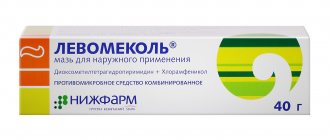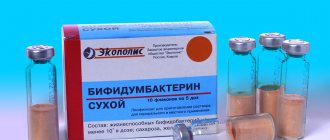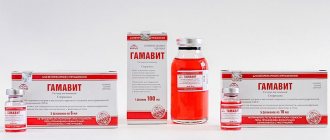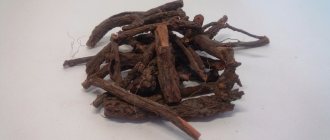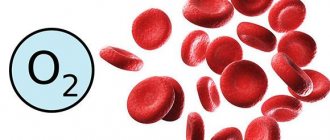Composition and price
The drug Dekaris is an anthelmintic and immunomodulatory agent for humans. The main active ingredient in its composition is Levomisole. It is this that has a toxic effect on worms and stimulates the human immune system. The following excipients were found:
- Corn starch;
- Talc;
- Sodium derivatives;
- Povidone;
- Dye;
- Flavoring.
Pills
Supplied in the form of tablets with a dosage of 50 mg (children's drug) and 150 mg (adult drug). The drug for children is sold in 2 tablets per package, for adults - in one package. The cost of packaging (regardless of the configuration) is about 90 rubles. Available without a prescription.
Analogue in the form of a solution
Mechanism of action
The synthetic anthelmintic drug Levamisole acts on the ganglia of roundworms. As a result of this effect, rapid paralysis of the muscles of the helminths occurs, and then complete paralysis of the individual and its death. In addition, a number of chemical processes in parasite cells are disrupted. The shells of the larvae and eggs are destroyed, as a result of which they cannot mature.
As a result of the action of the drug, helminths are eliminated from the body along with stool within 24 hours after administration. However, the effect is often not 100% and it is worth prescribing a repeat course. Therefore, the question of whether it is worth giving Decaris to chickens and dogs remains open.
Mechanism of action of the drug Dekaris
The drug Dekaris is a strong immunomodulatory and anthelmintic human remedy. The main active ingredient is levamisole, the toxic properties of which have a detrimental effect on the ganglia of roundworms :
- helminths paralyze muscles;
- after a short period of time, complete paralysis and inevitable death occurs;
- Irreversible processes also occur in the tissues of eggs and larvae, preventing their ripening.
© shutterstock
It is noteworthy that the synthetic drug was initially developed as a powerful immunomodulator for humans, increasing the body’s resistance to various infections. The antiparasitic effect was discovered later. Based on this, Decaris was never considered a veterinary drug and was practically not used to treat animals.
Today it is unwise to treat a cat with Decaris, given the large number of other, safer and more gentle anthelmintic drugs. In addition, the immunostimulating property of the drug does not make sense in relation to animals, since the characteristics of the formation of immunity in humans and cats are completely different.
Scope
Initially, this drug was developed as a synthetic immunomodulator for humans. It has a positive effect on the immune system, strengthening it and increasing resistance to infections. The ability of the drug to have a toxic effect on parasites was discovered only much later. Currently, it is prescribed (including for animals) for the following types of invasions:
- Hookworm;
- Ascariasis.
Thus, it is obvious that the spectrum of action of the drug is quite narrow. It doesn’t even help against all types of nematodes. A sufficient number of both human and veterinary drugs are now being sold, more effective and safer. Therefore, the advisability of taking such a remedy is unclear.
It is worth noting that the characteristics of the formation of immunity in humans and animals are different. Therefore, this drug will not have a significant immunomodulation effect on the animal. However, the anthelmintic effect can be quite significant.
Reception scheme
Animal owners who are thinking about whether the medicine can be used in veterinary medicine should know that it was once widely used to drive away worms in dogs and some farm animals and birds. However, currently there are more effective and safe veterinary drugs that will not have a negative effect on the animal, and which can be given to an animal of any type and breed (including cats).
For dogs
For dogs, the drug is usually prescribed for three days. Such a short course is enough to cure both mixed and specific invasion. Dosage is:
- Adult Dekaris - a quarter of a tablet per 15 kg of animal weight;
- Children's Dekaris - a quarter of a tablet per 5 kg of weight;
- If the animal weighs less than 5 kg, then a quarter of the tablet should be crushed into powder, add 2.5 ml of water and give to the animal at the rate of 1 ml per 1 kg of body weight.
The course of the drug can be repeated after three weeks. This will help get rid of parasite larvae and eggs.
For cats
Decaris should not be given to cats. This drug is toxic to them and its use can lead not only to serious consequences, but also to death. The active substance of the drug has a negative effect on the nervous system. A kitten or an adult animal may experience olfactory and even visual hallucinations, and coordination may be impaired. Sometimes appetite is disturbed and vomiting occurs.
The use of medication for cats is rarely fatal, but such cases do occur. Serious consequences develop in any case. If such a medicine is nevertheless given to a cat, then veterinary hospitals usually prescribe detoxification therapy and drips.
For chickens
This remedy can be given to chickens. However, there are also more effective and safe drugs for getting rid of roundworms in poultry. However, the dose for chickens and waterfowl is known. It is 20-40 mg of the drug per 1 kg of body weight of the individual.
Optimization of therapy for giardiasis
Giardiasis is an urgent medical and social problem: about 200 million people are infected with giardia every year (countries of Asia, Africa, Latin America); Clinical manifestations of this disease are recorded in almost 500 million people per year worldwide. In Russia, the incidence of giardiasis is very high and amounts to 90–100/100 thousand of the population; St. Petersburg is considered the most endemic city. Etiology and pathogenesis Giardia has 2 stages of development - vegetative (trophozoite) and cystic. Vegetative forms are mobile, pear-shaped, dimensions 9–21 mm in length, 5–15 µm in width. The body of Giardia is covered with a shell - pellicle, protoplasm without vacuoles. In the anterior rounded part of the Giardia body there is a suction disk - a peristome in the form of a cup-shaped depression. Trophozoites are found mainly in the upper parts of the small intestine, and when they enter the large intestine they turn into cysts, which are released into the external environment with feces. Up to 900 million Giardia cysts are released from a patient per day, while the infectious dose is 10–100 cysts. Cysts are stable in the external environment; in humid conditions they remain viable for up to 70 days, in soil for 9–12 days, at room temperature for 4–5 days, and in water bodies for several months. Vegetative forms have no epidemiological significance due to instability in the external environment [1, 2]. Giardiasis is classified as an infection transmitted primarily by water, but outbreaks are rarely detected. Routes of infection also include contact, household and food routes. Swallowed cysts enter the small intestine, unchanged by gastric juice. In the initial parts of the small intestine, the shell of Giardia cysts dissolves under the influence of intestinal juice, and they pass into a vegetative form. Giardia parasitizes the brush border of the microvilli of the small intestine, a site of intense hydrolysis of nutrients and absorption. Giardia pumps out nutrients from the brush border area, while the intestinal microflora does not change the process of parietal digestion due to the tight fit of the villi. About 1 million Giardia can parasitize 1 cm2 of mucous membrane (MS). Parasitism is accompanied by the following pathological changes [1, 3]: – mechanical traumatization by Giardia of the intestinal mucosa and biliary tract with the further development of inflammation and the formation of microabscesses; – changes in cellular biochemistry in the tissues of affected areas of the digestive organs with the inclusion of stress-activating factors and neurotransmitters; – disruption of intestinal biocenosis; – formation of secondary enzymatic deficiency; – subatrophy and atrophy of the small intestine, leading to malabsorption syndrome; – impaired motility of the small intestine (reflux pathology) due to irritation of the nerve endings of the intestinal wall; – a violation of the binding of bile acids, manifested by a change in motility not only of the small intestine, but also of the biliary tract, and skin itching. Giardia waste products activate immunocompetent cells that synthesize IgE and immune complexes, which affects the course of dermatoses and leads to frequent relapses and chronicity of the skin process; a decrease in the production of secretory IgA contributes to the chronicity of inflammatory processes in the gastrointestinal tract (GIT), secondary immunodeficiency. The main clinical manifestations of giardiasis are considered to be diarrhea and malabsorption, however, in intensive foci with high infestation of residents, the clinical symptoms and signs of giardiasis are not entirely obvious. At present, the position about the possibility of developing giardia cholecystitis is not confirmed, because concentrated bile has a pronounced bactericidal effect. In addition, the contents of the biliary tract have no nutrients. In this regard, the possibility of direct damaging effects of Giardia on the bile ducts and liver has not been proven. Hepatobiliary manifestations are caused by dysfunction of the gallbladder, sphincters and cholestasis [1–3]. In recent years, a clear pathogenic effect of Giardia on the pancreas (P) has been proven. Giardia can have a direct pancreatotoxic effect, penetrating the parenchyma of the gland and causing the development of pseudotumor pancreatitis [4]. The development of exocrine pancreatic insufficiency is described based on the results of direct and indirect tests. The possibility of a significant reduction in the production of proteo-, amylo- and lipolytic enzymes of the pancreas has been shown, while after recovery from giardiasis, pancreatic secretion is normalized. Giardia can reduce the activity of trypsin and lipase in vitro [5]. As a result of long-term persistence in the body, accumulation of metabolic products, incl. Due to the decay substances of protozoa, a syndrome of chronic endogenous intoxication is formed, leading to the involvement of almost all organs and systems in the clinical picture. Skin lesions with giardiasis are characterized by pallor, follicular punctate hyperkeratosis, clinically represented by follicular papules and creating the impression of “goose bumps” or “grater” localized on the extensor surface of the arms and legs, the phenomenon of cheilitis and “jams” around the mouth. A lasting effect of therapy for allergic dermatitis occurs only after the inclusion of specific anti-giardiasis therapy [6]. Classification There is no unified classification of giardiasis. In Russia, a classification of V.P. has been proposed. Novikova et al. [3]. By duration of invasion: 1. Acute – up to 1 month. 2. Subacute – from 1 to 3 months. 3. Chronic – more than 3 months. By frequency of invasion: 1. First detected. 2. Repeated. Periods: 1. Incubation. 2. Clinical manifestations. 3. Convalescence. 4. Chronization. According to the predominance in the clinical picture: 1. The underlying disease. 2. Concomitant disease (including mixed infection). By severity: 1. Mild. 2. Average. 3. Heavy. According to clinical manifestations: I. Typical forms: 1. A variant with predominant damage to the digestive system, including dyspepsia syndrome, irritable bowel syndrome, sphincter of Oddi dysfunction, gastroduodenitis. 2. A variant with predominant damage to other organs and systems, including anemia, allergic dermatitis, allergic rhinitis, asthenovegetative syndrome. 3. Mixed option. II. Atypical forms: 1. Giardia carrier state: – transient (healthy); – convalescent. 2. With erased clinical manifestations (subclinical). Diagnostics Indications for examination for giardiasis are: – diarrhea of unknown etiology; – chronic gastrointestinal diseases; – persistent nausea; – intestinal dysbiosis; – neurocirculatory dysfunction; – malnutrition; – dermatitis, urticaria; – immunodeficiency state; – allergy of unknown etiology, persistent eosinophilia in the blood; – long-term low-grade fever of unknown etiology. The final diagnosis of giardiasis is made based on the detection of Giardia cysts or trophozoites in feces or duodenal contents. Since cysts are not constantly released and are sometimes absent (“blind period”), 3-fold microscopy of stool is recommended with an interval of 2–3 days. A biopsy of the mucous membrane of the small intestine, which can be performed due to the similarity of clinical manifestations with those of celiac disease, reveals atrophy of the mucous membrane, shortening of the villi, deepening of the crypts, and lymphocytic infiltration, which sometimes complicates differential diagnosis [S.V. Bellmer, 2004; M.Yu. Denisov, 2007]. Unlike celiac disease, giardiasis is not characterized by an increase in antibody titers to gliadin and tissue transglutaminase [2]. Treatment The complex of therapeutic measures includes several stages: Preparatory stage The goals of this stage are to reduce the degree of endotoxemia, eliminate the phenomena of cholestasis, secretory and motor-evacuation changes in the upper gastrointestinal tract, and increase the defenses of the macroorganism. Duration – from 2 to 4 weeks. In the diet, the amount of: - vegetable fiber increases (gray porridges: buckwheat, rolled oats, millet; bran, fruits, vegetables, vegetable oil); – protein foods; – products that increase acidity (systematic consumption of cranberries, lingonberries). An enhanced water regimen is recommended, including various drinks, decoctions of choleretic herbs, and balneotherapy. For balneotherapy, water of medium and low mineralization is recommended at a dose of 3 mg/kg body weight 3 times a day for 30 minutes. before eating warm without gas 3-4 weeks. In contrast, easily digestible carbohydrates are limited. Fasting is strictly contraindicated. At the preparatory stage, through drug therapy, such important tasks as normalization of bile secretion, improvement of metabolic processes in the hepatobiliary system, and reduction of endotoxicosis are solved. The duration of this stage is from 2 to 4 weeks. depending on the severity of the condition and the severity of clinical manifestations. First of all, drug therapy is aimed at normalizing the rhythmic passage of intestinal contents and bile secretion. This is important because a high concentration of bile in itself has a detrimental effect on many protozoa, and restored gastrointestinal motility reduces intoxication. An important place is given to the prescription of choleretic drugs, with preference given to cholekinetics and cholespasmolytics; It is very useful to carry out tubing according to Demyanov during treatment. For the hypertensive-hyperkinetic variant of biliary system dysfunction, myotropic antispasmodics are used. In case of hypotonic dysfunction, prokinetics are prescribed in addition to choleretic drugs. Enzyme replacement therapy should be prescribed according to indications to those patients who have signs of pancreatic enzymatic insufficiency (steatorrhea, creatorrhoea) for a short period of time (5–7 days). To reduce the severity of endotoxemia, enterosorbents are used for 5–7 days. The effectiveness of preparatory therapy is assessed by improving the patient’s general condition, reducing signs of endotoxemia, the severity of manifestations of biliary tract dysfunction, and the reduction/absence of abdominal pain. Ignoring preparation for eradication can lead to deterioration of the patient’s condition, the formation of complications and the erroneous opinion that therapy is ineffective. Eradication stage Typically, eradication therapy is carried out in one course of specific drugs, while the drugs used at the preparatory stage are usually not canceled (antispasmodics, enterosorbents, choleretic drugs). Today, doctors have several medications for the treatment of Giardia with courses of varying durations. The choice of a multi-day or one-day therapy regimen usually remains with the attending physician. However, as clinical experience shows, multi-day eradication regimens are more effective and do not produce side effects or complications. There is information about the emergence and spread of G. lamblia resistance to metronidazole, tinidazole, ornidazole, furazolidone, albendazole [AA Escobedo, S. Cimerman, 2007], and therefore constant monitoring of the possibilities of using medications to treat giardiasis is necessary. Metronidazole - prescribed for 5 days, children under 1 year - 125 mg/day, 2-4 years - 250 mg/day, 5-10 years - 375 mg/day, 10-15 years - 500 mg/day daily orally, adults 750–1000 mg in 2 divided doses. For a long period of time it was the main drug for the treatment of giardiasis. Typically, when using metronidazole to increase the effectiveness of treatment, it is prescribed in two courses with an interval of 5-7 days. Efficiency is about 70%. Available in tablets of 250 mg and 500 mg. Furazolidone - taken orally after meals. Adults are prescribed 0.1 g 4 times a day, children - at the rate of 10 mg/kg body weight, the daily dose is given in 3 doses. The course of treatment is 7 days. Available in 50 mg tablets. Nifuratel - in children, a daily dose of 30 mg/kg body weight in 2 doses, adults 400 mg 2-3 times/day, course 7 days. Efficiency 96.8%. The advantage is the effect on H. pylori, when prescribed as part of eradication therapy, which is relevant, given the widespread prevalence of Helicobacter pylori infection. Available in 200 mg tablets. Albendozole is a broad-spectrum anthelmintic drug recommended for children over 2 years of age at the rate of 10–15 mg/kg 1 time per day, adults and older children 400 mg/day for 3 days, repeated after 3 weeks. [7, 8]. Albendazole is effective in the treatment of metronidazole-resistant strains of Giardia [9]. The advantage is a wide spectrum of action, which is important for mixed infections (for example, ascariasis, enterobiasis, etc.). Available in tablets of 200 and 400 mg, suspension of 100 mg in 5 ml. Tinidazole – used in children at the rate of 50–60 mg/kg/day, adults 2000 mg/day, course of treatment is 1–2 days. The daily dose is divided into 3-4 single doses and taken during or after meals. Efficiency 70–80%. Available in 500 mg tablets. Ornidazole - prescribed for adults and children weighing over 35 kg - 1.5 g 1 time / day; children weighing up to 35 kg - 40 mg/kg/day. Possible treatment regimens: from 1 to 3 days - the entire daily dosage is taken once at night in children and adults up to 60 kg, in adults weighing more than 60 kg - 2 tablets in the morning and 2 tablets in the evening. For a 5–10-day course, adults and children weighing more than 35 kg receive 2 tablets/day, 1 in the morning and 1 in the evening; children weighing up to 35 kg receive 25 mg/kg in one dose. Efficiency is 90–92.5% with a one-day course. Available in 500 mg tablets. In the studies of E.A. Kornienko et al. (2008), it was shown that the effectiveness of therapy increases when a probiotic drug is added to the traditional regimen. When prescribing a course of antiparasitic therapy to a sick child, it is necessary to examine all members of his family for G. lamblia and, if a positive result is obtained, prescribe anti-giardiasis therapy to all infected people, since they can serve as sources of re-infection. With a staged treatment regimen, the therapeutic effect is observed in 92–95% of patients. But at the same time, practicing doctors often encounter repeated (up to 5-6 times over several years) isolation of Giardia from the same patient. It is believed that when Giardia is isolated within 3 weeks. after therapy, we can talk about relapse, and at a later date – about reinfection. Recovery stage If the hepatobiliary system is involved in the pathological process, it is necessary to continue choleretic therapy. Herbal medicine provides a good clinical effect. A decoction of birch buds or oats is especially recommended for 2-3 weeks, and after a break (2 weeks) - a decoction of bearberry for a 10-12-day course (this creates conditions conducive to the inhibition of Giardia cysts). Courses of vitamin therapy (vitamins B, A and E), as well as probiotics or prebiotics, are provided. After 10 days and after 1 month. after the end of etiotropic treatment, a control parasitological study is carried out (3 control stool tests for Giardia cysts with an interval of 1–2 days). Prevention – Drink only filtered tap or boiled water. – Conduct examinations of children and staff in organized children's groups 2 times a year. – When identifying individuals who secrete Giardia cysts, sanitize all family members. References 1. Gubergrits N.B., Plotnikova E.Yu., Naletov S.V. and others. Giardiasis and its combination with helicobacteriosis: review of the literature and own data // Suchasna gastroenterology. 2012. No. 3 (65). 2. Denisov M.Yu. Practical gastroenterology for pediatricians. M., 2004. pp. 267–275. 3. Novikova V.P., Kalinina E.Yu., Shabalov A.M., Osmalovskaya E.A. Giardiasis. Training manual for doctors. St. Petersburg: InformMed, 2010. 120 p. 4. Clinical pancreatology for practicing gastroenterologists and surgeons // Ed.JE Dominguez-Munoz. Oxford et al. A Blackwell Publ. Co., 2005. 535 p. 5. Carter JE, Nelson JJ, Eves M, Boudreaux C. et al. Giardia lamblia infection diagnosed by endoscopic ultrasound-guided fine-needle aspiration // Diagn.Cytopathol. 2007. Vol. 35. No. 6. P. 363–365. 6. Lebedeva O.M., Gostishcheva E.V., Adzhigafarova E.S. The influence of functional disorders in the biliary system on the development and course of atopic dermatitis in children // Crimean Journal of Experimental and Clinical Medicine. 2012. T. 2. No. 1-2 (5-6). pp. 86–88.
Contraindications
In some cases and to some groups of animals, giving the drug is strictly prohibited. The following groups of animals cannot be driven away with worms by Dekaris:
- It is strictly forbidden to give the drug to cats;
- Pregnant and lactating females are not recommended to use the product;
- Animals with kidney and liver diseases;
- When suffering from a viral infection and recovering from it;
- With significant weakening of the body, as well as in elderly animals;
- Puppies under 1 year of age;
- If you have problems with hematopoiesis, you should take the drug with extreme caution.
In rare cases, dogs develop side effects such as refusal to drink (especially water), olfactory and even visual hallucinations, and minor incoordination. In addition, the animal may be a little lethargic and sleepy. Typically, these complications are mild, but if their severity increases, you should consult a veterinarian.
Consequences in cats after Dekaris
Just one tablet, or even a portion of it, intended for a child, can lead to serious negative consequences in cats. An overdose of Decaris is especially dangerous, which can lead to severe intoxication. The more active substance in a cat’s blood, the higher the likelihood of death. Symptoms of Dekaris in a cat or small kitten are :
- visual hallucinations;
- impaired sense of smell;
- problems with coordination of movements;
- lack of appetite, vomiting;
- weakness.
The appearance of any of the signs is a good reason to urgently contact a veterinarian. Full provision of information about what was given to the cat and in what quantity, as well as the nuances of its feeding and general lifestyle, will help in making a correct diagnosis. To remove toxic substances from the body, detoxification therapy is used, including intravenous infusions . To protect your pet from serious illness, and yourself from unnecessary expenses, you should not give Decaris to cats in any quantity.
© shutterstock




